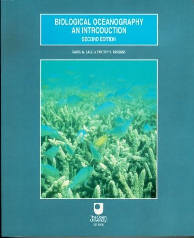
Course Description
eDesktop
OU Library
British Geological Survey
Geological Society
Science Direct
ISI Web of Knowledge
National Undersea Research Center for the North Atlantic and Great Lakes
Alfred Wegener Institute
Aquarius - Underwater Laboratory
Harbor Branch Oceanographic
French Research Institute for Exploration Undersea
Japan Agency for Marine-Earth Science and Technology
Jason Project
Monterey Bay Aquarium
Monterey Bay Aquarium Research Institute
National Oceanographic and Atmospheric Administration
National Aquarium in Baltimore
National Maritime Museum
Oceanography Virtual Library
The Reef Environmental Education Foundation
Reef and Rainforest Expeditions
Southampton Oceanography Center
Topex/Poseidon
UNESCO Intergovernmental Oceanographic Commission
USGS - Marine Geology - Research beneath the sea
University of Liverpool - Earth and Ocean Sciences
University of Washington - School of Oceanography
World Ocean Circulation Experiment Meteorological Data Center
Wood Hole Oceanographic Institution
Geo Information Gateway
Internet Resources
West's Geology Directory
Back to OU
|
|||||||||||||||
S330 Oceanography
February 2006
Blocks - with summaries, when doneOctober 16th 2006
I took the exam on Thursday, 12th 2006 and messed it up big time! I would be EXTREMELY surprised if the markers were kind enough to pass me! A big mistake caused a chain-reaction of completely wrong answers - and this is a pity, because, when I looked at the paper, I knew that I could pass the thing - and I should've. My coursework average (without substitution) was 65%.
For anybody contemplating this course: it's amazingly interesting - but also amazingly difficult in parts - with a whopping amount of information to take in. Well worth doing, despite that your life will be completely dominated by the oceans when it comes to revision ...
January 5th 2006
First mailing arrived this morning - eeeeeek!! (It's hard!) See individual block links (above) and blog for more...
December 29th 2005
The set book arrived this morning (I wonder why we have to pay and extra £26 for this? It is, after all, part of the same series as the course books!). Anyway, looks good - with most of the contents, vaguely familiar from past courses.

CONTENTS
CHAPTER 1 INTRODUCTION
Special properites affecting life in the sea
Classifications of marine environments and marine organisms
Basic ecological terms and concepts
r- and K-selection
The historical development of bioloigical oceanography
CHAPTER 2 THE ABIOTIC ENVIRONMENT
SOLAR RADIATION
Radiation at the sea surface
Radiation in the sea
TEMPERATURE
Sea surface temperatures
Vertical temperature distribution
SALINITY
Range and distribution of salinity
Biological importance of salinity
DENSITY
PRESSURE
SURFACE CURRENTS
Biological significance of currents
CHAPTER 3 PHYTOPLANKTON AND PRIMARY PRODUCTION
SYSTEMATIC TREATMENT
Diatoms
Dinoflagellates
Other phytoplankton
PHOTOSYNTHESIS AND PRIMARY PRODUCTION
Methods of measuring biomass and primary productivity
RADIATION AND PHOTSYNTHESIS
THE EFFECT OF NUTRIENTS ON GROWTH RATE
PHYSICAL CONTROLS OF PRIMARY PRODUCTION
Oceanic gyres and rings
Continental convergence and divergence
Planetary frontal systems
Shelf-break fronts
River-plume fronts
Island mass effect and Langmuir frontal zones
GLOBAL PHYTOPLANKTON PRODUCTIVITY
CHAPTER 4 ZOOPLANKTON
COLLECTION METHODS
HELOPLANKTON: SYSTEMATICS AND BIOLOGY
MEROPLANKTON
VERTICAL DISTRIBUTION
DIEL VERTICAL MIGRATION
SEASONAL VERTICAL MIGRATIONS
ZOOGEOGRAPHY OF THE HOLOPLANKTON
Patchiness
LONG-TERM CHANGES IN ZOOPLANKTON COMMUNITY STRUCTURE
CHAPTER 5 ENERGY FLOW AND MINERAL CYCLING
FOOD CHAINS AND ENERGY TRANSFER
FOOD WEBS
The microbial loop
MEASURING SECONDARY PRODUCTION
Field studies
Experimental biological oceanography
A COMPARISON OF MARINE AND TERRESTRIAL PRODUCTION OF ORGANIC MATERIAL
MINERAL CYCLES
Nitrogen
Carbon
CHAPTER 6 NEKTON AND FISHERIES OCEANOGRAPHY
NEKTONIC CRUSTACEA
NEKTONIC CEPHALOPODS
MARINE REPTILES
MARINE MAMMALS
SEABIRDS
MARINE FISH
Fish migrations
FISHERIES AND FISHERIES OCEANOGRAPHY
World fish catch and fisheries management
Fluctuations in the abundance of fish stocks
Regulation of recruitment and growth in fish
Fishing and the use of near real-time oceangraphic data
MARICULTURE
CHAPTER 7 BENTHOS
BENTHIC PLANTS
Measurements of benthic primary production
BENTHIC ANIMALS
Systematics and biology
Sampling and production measurements
DETERMINANTS OF BENTHIC COMMUNITY STRUCTURE
CHAPTER 8 BENTHIC COMMUNITIES
INTERTIDAL ENVIRONMENTS
Tides
Environmental conditions and adaptations of intertidal organisms
ROCKY INTERTIDAL SHORES
Zonation
Trophic relations and the role of grazing and predation in determining community structure
KELP FORESTS
SAND BEACHES
Environmental characteristics
Species composition
ESTUARIES
CORAL REEFS
Distribution and limiting factors
Coral structure
Diversity
Nutirtion and production in reefs
Production estimates
Formation and growth of reefs
Zonation patterns on reefs
MANGROVE SWAMPS
What are mangroves?
Ecological features of mangrove swamps
Importance and uses of mangroves
DEEP-SEA ECOLOGY
Faunal composition
Species diversity
Biomass
Food sources
Rates of biological processes
Future prospects
HYDROTHERMAL VENTS AND COLD SEEPS
Chemosynthetic production
Vent fauna
Shallow vents and cold seeps
Unique environmental features of sulphide communities
CHAPTER 9 HUMAN IMPACTS ON MARINE BIOTA
FISHERIES IMPACTS
MARINE POLLUTANTS
Petroleum hydrocarbons
Plastics
Pesticides and other biologically active organic compounds
Heavy metals
Sewage
Radioactive wastes
Thermal effluents
INTODUCTIONS AND TRANSFERS OF MARINE ORGANISMS
IMPACTS ON SPECIFIC MARINE ENVIRONMENTS
Estuaries
Mangrove swamps
Coral reefs.
I really don't know what I'm doing!! I registered for this course on 22nd December - because I felt that I would have time to do 2 courses - but now (23rd!) I'm not so sure!!!
Underwater volcanoes; the greenhouse effect; eddy systems in the ocean; the El Niño phenomenon and its link to droughts and floods; the global view of ocean properties that satellite technology can provide: all these are just some of the latest areas of interest in oceanography. Oceanography is a ‘whole Earth’ science:, the oceans interact continuously with the solid Earth and the atmosphere, and are the setting for much of the planet’s biological production. The Earth sciences (physics, chemistry and biology) are all prominent in the course, because their interrelationship in the marine environment is the essence of oceanography.
